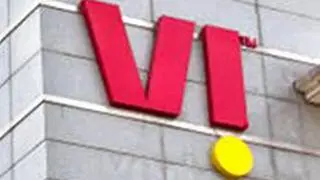Bucking the general slow growth in the country’s automotive sector, Tata Motors Limited has grown by over 20 per cent in the first nine months and expects to close the current financial year with a market share of about seven per cent.
The automotive major, whose domestic market share had once slipped to 3-3.5 per cent few years ago, has gained share and is now looking to further consolidate its domestic business, as it launches new models and addresses segments where it is currently not present.
Mayaank Pareek, President, Passenger Vehicles Business Unit, Tata Motors said, “Thus far during the current financial year, it has been challenging to the automotive sector. It has been growing at about 4.4 per cent. However, we have grown by over 20-21 per cent aided by new launches.”
Speaking to Business Line on the sidelines of the launch of their latest offering, a versatile Sports Utility Vehicle (SUV), Tata Harrier, derived from Land Rover’s D8 platform here today, the Tata Motors President said, “We are, currently, present in a smaller addressable market of about 16 per cent. In the next few years we plan to take this up to 90 per cent of the market with the launch of few more vehicles. This will enable us to further consolidate our presence and market share.”
The focus continues on growing the domestic market both in urban and rural areas. The rural market holds immense scope for growth, he said.
Stating the next major launch will be in the second quarter of next fiscal, Pareek said the country’s automotive sector is passing through several major changes, which includes the need to transition to BS VI norms from April 1, 2020.
“This will call for various players in the automotive sector to brace up for this change. Such a transition will lead to further price escalation of both petrol and diesel cars as they would have to conform to BS VI norms. While oil marketing companies are bracing up to provide fuels that meet the new norms, the automotive sector will have to brace up for these changes, particularly to upgrade engines to meet these stringent norms,” he explained.
“At Tata Motors, we have the technology to brace up to these requirements and expect to be BS VI norms ready much ahead of the schedule April 1, 2020. But, significantly, the sector players would have to align their manufacturing so that they do not end up with BS IV norm vehicles as on March 31, 2020,” he said.
“Tata Motors has come up with 5-6 new models over the past few years and plans to take this up to 12-14 vehicles, which will enable us to cover 90 per cent of the country’s addressable market for passenger vehicles. This will enable us to further consolidate,” he said.
Referring to coming demand for electric vehicles in the country, Pareek said, “As a company we have technology to cater to this. We have been chosen by EESL for supply of e-vehicles. However, the challenge is to have a support infrastructure for charging. Today’s situation in the EV segment is like having petrol cars without petrol.”
Pareek said, “The response for Harrier is overwhelming.”







Comments
Comments have to be in English, and in full sentences. They cannot be abusive or personal. Please abide by our community guidelines for posting your comments.
We have migrated to a new commenting platform. If you are already a registered user of TheHindu Businessline and logged in, you may continue to engage with our articles. If you do not have an account please register and login to post comments. Users can access their older comments by logging into their accounts on Vuukle.